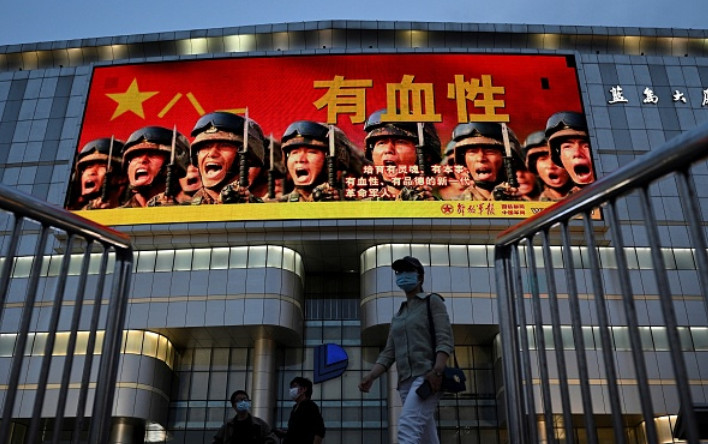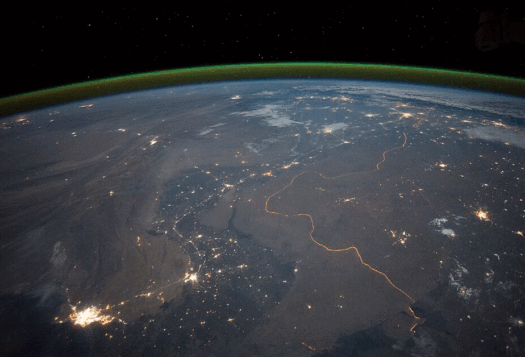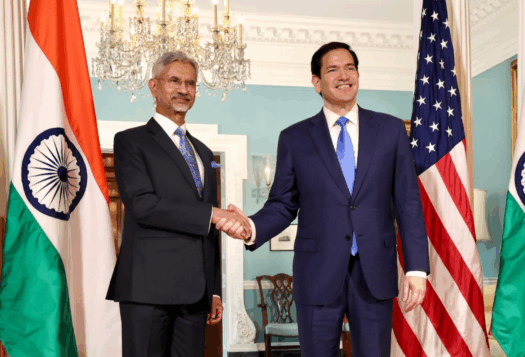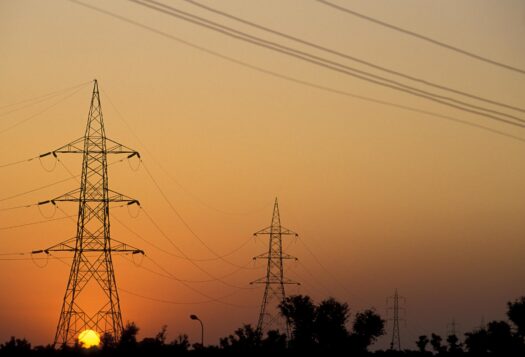
At the first session of the 14th National People’s Congress in March 2023, China announced a 7.2 per cent nominal increase in its defense budget from 2022 to CNY 1.55 trillion. The new budget is the first under the unprecedented third term of President Xi Jinping, and if executed as planned, would mark the 29th consecutive year of increased military spending, the longest streak by any country recorded in the SIPRI Military Expenditure Database.
China’s increased defense budget aligns with its efforts towards military modernization since the late 1990s. Although the increase was anticipated, it has garnered significant attention from the international community due to its association with China’s growing assertive foreign and defense policy. This trend has been particularly noticeable over the past decade under Xi’s leadership.
Xi has championed a more proactive foreign policy that seeks to strengthen China’s global influence and protect the country’s strategic interests, both regionally and globally. Many countries in the region are increasingly wary of Beijing’s intentions, and some view the continued growth of China’s military spending as a reflection of its more aggressive approach to foreign policy, raising concerns about its impact on regional stability.
Military Spending Mirrors GDP Growth: A Historical Perspective
According to SIPRI’s latest data update, China — the world’s second-largest spender — allocated an estimated USD 292 billion to its military in 2022, constituting 13 per cent of the world’s total spending. This represents an increase by 63 per cent compared to 2013, and a 4.2 per cent increase compared to 2021. China’s 4.2 per cent growth rate in 2022 was the second-lowest since 1995, higher only than the 2.6 per cent rate in 2021, as both years saw economic challenges brought by the stringent ‘Zero-COVID’ policy which only ended in December 2022. Still, China’s military spending remained steady at 1.6 per cent of its GDP in 2022, in line with the last decade’s relatively stable range of 1.6-1.8 per cent, indicating that the low growth rates reflect the economic downturn rather than changes to the budgeting.
Many countries in the region are increasingly wary of Beijing’s intentions, and some view the continued growth of China’s military spending as a reflection of its more aggressive approach to foreign policy, raising concerns about its impact on regional stability.
Although Xi’s first two terms have been associated with growing military assertiveness, the 63 per cent increase over the last decade is comparatively lower than that of Xi’s two predecessors during China’s rapid economic expansion in the 1990s and 2000s: military spending increased drastically by 122 per cent between 1993 and 2002 under President Jiang Zemin, and by 152 per cent between 2003 and 2012 under the Hu Jintao government. More recent developments reflect a larger trend in China’s military spending: it has grown largely irrespective of changes in geopolitical tensions, but rather alongside China’s GDP growth and its pursuit of military modernization in the last three decades. As economic growth slowed down in the 2010s, the growth rate of Chinese military spending also declined to the single digits, and military expenditure as percentage of government expenditure declined steadily from 13 per cent in 1989 (the first year for which data on China is available) to 4.8 per cent in 2022.
Main Drivers of China’s Military Spending
The continued albeit decelerating growth in China’s military spending can be attributed to its efforts to modernize the People’s Liberation Army (PLA) and correspond with Xi’s self-imposed timelines for the PLA to complete national defense and military modernization by 2035 and fully transform into a ‘world-class’ military by mid-century.
The current priorities of military expenditure align with the 14th five-year plan (2021-2025) for the PLA, which aims to enhance the arms-industrial base and develop cutting-edge military technologies, including a military application of artificial intelligence. These priorities were reaffirmed in the 20th Party Congress held in October 2022, where President Xi Jinping further consolidated his grip on the PLA. In line with the pursuit of military modernization and self-reliance in arms production, equipment cost has become the largest component of China’s official defense budget, accounting for 37-41 per cent between 2017-2020 (the most recent years where data is available). Historically, equipment, training and maintenance, and personnel costs have each equally made up roughly one-third of the official defense budget.

The strategic calculus of China also serves as a key contributing factor to its increased military spending, as it seeks to address complex security challenges through the growth and expansion of its military capabilities. The relations and role of the United States and its allies in particular are central to the debate shaping China’s external security environment. China is concerned about the increasing alignment between the US and its neighboring countries, as well as the growing acceptance of the Indo-Pacific concept, which it regards as a containment strategy. The term ‘Indo-Pacific’ has yet to be accepted by China, and ‘Asia-Pacific’ remains preferred instead. Furthermore, China is alarmed by minilateral initiatives such as the Quad and AUKUS, which “aim to decouple from China”. The deteriorating global security environment, in part due to the ongoing Russia-Ukraine war, has also affected China’s assessment of its own security situation and its allocation of the military budget. More importantly, Beijing has increasingly lamented what it perceives as a ‘Cold War mentality’, which it claims is re-emerging among the US and its allies as they attempt to contain China. Last but not least, the ongoing efforts to enhance military capabilities remain crucial for China in addressing the unresolved territorial and sovereignty disputes in the East and South China Seas, as well as the growing tensions in the Taiwan Strait.
The China Factor for Other Major Military Spenders in Asia
Despite the economic slowdown caused by the COVID-19 pandemic, China’s sustained growth in military spending, coupled with its expanding influence, is a significant factor driving other major military spenders in Asia to increase their own military budgets.
India increased its military spending by 47 per cent from 2013 to USD 81.4 billion in 2022 (2.4 per cent of the GDP) amid ongoing border tensions with China in eastern Ladakh. In addition to the land dispute with China, India is also grappling with maintaining maritime security in the Indian Ocean. China’s growing presence in the region, including its construction of ports and associated facilities in Pakistan and Sri Lanka, have raised concerns in India about Beijing’s intentions and potential military capabilities in the Indian Ocean. In particular India’s spending on its navy, as the central pillar for counterbalancing China’s increasing presence in the Indian Ocean, has been gradually growing in the past few years.
At USD 46 billion or 1.1 per cent of its GDP, Japanese military expenditures in 2022 surpassed 1 per cent for the third consecutive year and was the highest since 1960. In its latest National Security Strategy (released in December 2022), Tokyo referred to China as “a matter of serious concern” and “the greatest strategic challenge”. This highlights concerns over the continued enhancement of China’s nuclear and missile capabilities, the intensified military activities in the East and South China Seas, China’s strategic ties with Russia, and its increasing military pressure on Taiwan. Japan’s spending reflects a paradigm shift in its defense policy, as Tokyo is abandoning its self-imposed cap on military spending of 1 per cent of the GDP and aims to raise its military spending to 2 per cent of the GDP by 2027.
Despite the economic slowdown caused by the COVID-19 pandemic, China’s sustained growth in military spending, coupled with its expanding influence, is a significant factor driving other major military spenders in Asia to increase their own military budgets.
With USD 46.4 billion (2.7 per cent of the GDP), South Korea was the third largest military spender in Asia in 2022. However, South Korea may be less attentive to China’s growing military expenditures compared to India and Japan, given its more pressing security concerns on the divided Korean Peninsula. Nevertheless, under the Yoon administration, efforts to strengthen alliance cooperation with the United States and the recent South Korea-Japan rapprochement could make it increasingly challenging for Seoul to sustain its traditional approach of seeking a balance between Beijing and Washington amid the intensifying great power competition.
Behind the Official Figures
China’s official military spending figures have faced criticism due to a lack of public transparency and disaggregation. This has presented a significant challenge for those seeking to gain a complete understanding of the world’s second-largest military spender. SIPRI’s estimates for Chinese military expenditure differ from the official national defense budget. The SIPRI figure for 2022 is 33 per cent or CNY 489 billion (about USD 73 billion) higher than the figure published in the official state budget. In particular, the annually published national defense budget excludes important elements of what SIPRI defines as military expenditure, such as spending for the People’s Armed Police and Chinese Coast Guard.
Despite concerns over the transparency on the official figures, the sustained growth in China’s military spending demonstrates its unwavering commitment to the PLA’s modernization to become a ‘world-class’ military by the mid-21st century. Even in the face of challenging global economic conditions, this growth is likely to persist as a long-term trend. The development is likely to encourage other countries in the Indo-Pacific to follow suit, as the combined military spending in the area has already been on the rise for over 30 years. To avoid a downward spiral of threat perceptions and the resulting action-reaction cycle, it is imperative for states in the region to engage in continuous dialogs and confidence-building measures.
Also Read: U.S.-China Strategic Competition and the Resulting Arms Race in South Asia
Editor’s Note: A version of this piece was originally published on 9DashLine, and has been republished with permission of the editors.
***
Image 1: STR/AFP via Getty Images
Image 2: Noel Celis/AFP via Getty Images


